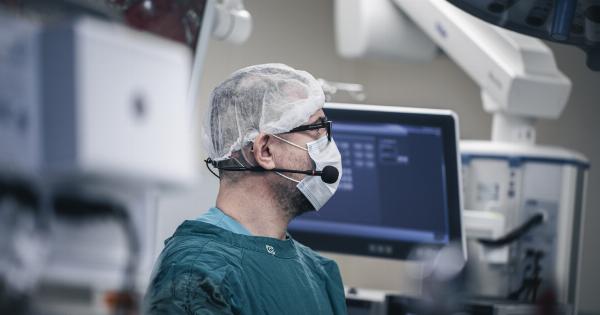A hernia occurs when an organ, such as the intestines, protrudes through a weak spot in the surrounding muscle or connective tissue. It can cause discomfort, pain, and other symptoms depending on its location.
In this article, we will explore what causes hernias, the symptoms they present, and some prevention tips to keep in mind.
1. Types of Hernias
Hernias can occur in various locations in the body, each having its own set of causes and symptoms. The most common types of hernias include:.
- Inguinal hernia: This type occurs in the groin area and is more common in men than women.
- Femoral hernia: This type also occurs in the groin area but is more common in women.
- Incisional hernia: These hernias develop at the site of a previous surgical incision.
- Umbilical hernia: This type occurs near the belly button, often in infants or women who have been pregnant.
- Hiatal hernia: These hernias occur when part of the stomach pushes through the diaphragm into the chest cavity.
2. Causes of Hernias
Hernias can be caused by a combination of factors, including:.
- Weak abdominal muscles: A primary cause of hernias is a weakness in the muscles of the abdominal wall. This weakness can be present from birth or develop over time due to factors like aging, strain, or injury.
- Heavy lifting: Lifting heavy objects incorrectly, especially if done frequently, can strain the abdominal muscles and lead to hernias.
- Persistent coughing or sneezing: Chronic coughing or sneezing can put strain on the abdominal muscles, increasing the risk of a hernia.
- Pregnancy: The pressure on the abdomen during pregnancy can weaken the muscles and contribute to the development of hernias.
- Obesity: Excessive weight can put extra strain on the abdominal muscles, making hernias more likely.
3. Symptoms of Hernias
The symptoms of a hernia can vary depending on the type and location. Common symptoms include:.
- Bulge or lump: A visible bulge or lump, which may or may not disappear when lying down, is a typical symptom.
- Pain or discomfort: Hernias can cause pain or discomfort, especially when lifting heavy objects or straining.
- Weakness or pressure: Some people may experience a feeling of weakness or pressure in the abdomen or groin area.
- Indigestion or acid reflux: Hiatal hernias, in particular, can cause symptoms like heartburn, acid reflux, and difficulty swallowing.
- Nausea and vomiting: In certain cases, hernias can lead to nausea and vomiting if they obstruct the digestive system.
4. Prevention Tips
Although hernias cannot always be prevented, there are some measures you can take to reduce your risk:.
- Maintain a healthy weight: Keeping a healthy weight can lessen the strain on your abdominal muscles, decreasing the chances of developing a hernia.
- Practice proper lifting techniques: When lifting heavy objects, lift with your legs instead of your back and avoid twisting or bending.
- Avoid chronic coughing or sneezing: If you have a persistent cough or frequently suffer from allergies, speak to your healthcare provider about appropriate management strategies.
- Strengthen your core muscles: Engaging in regular exercises that target the abdominal muscles can help improve their strength and stability.
- Quit smoking: Smoking weakens the muscles and connective tissues, making hernias more likely to occur.
Conclusion
Hernias can be caused by a combination of factors, including weak abdominal muscles, heavy lifting, persistent coughing, pregnancy, and obesity.
The symptoms vary depending on the type and location of the hernia but may include a visible bulge or lump, pain or discomfort, weakness or pressure, and digestive issues. While hernias cannot always be prevented, maintaining a healthy weight, practicing proper lifting techniques, and strengthening core muscles can help reduce the risk.
By taking proactive measures, individuals can lower their chances of developing hernias and mitigate associated symptoms.































